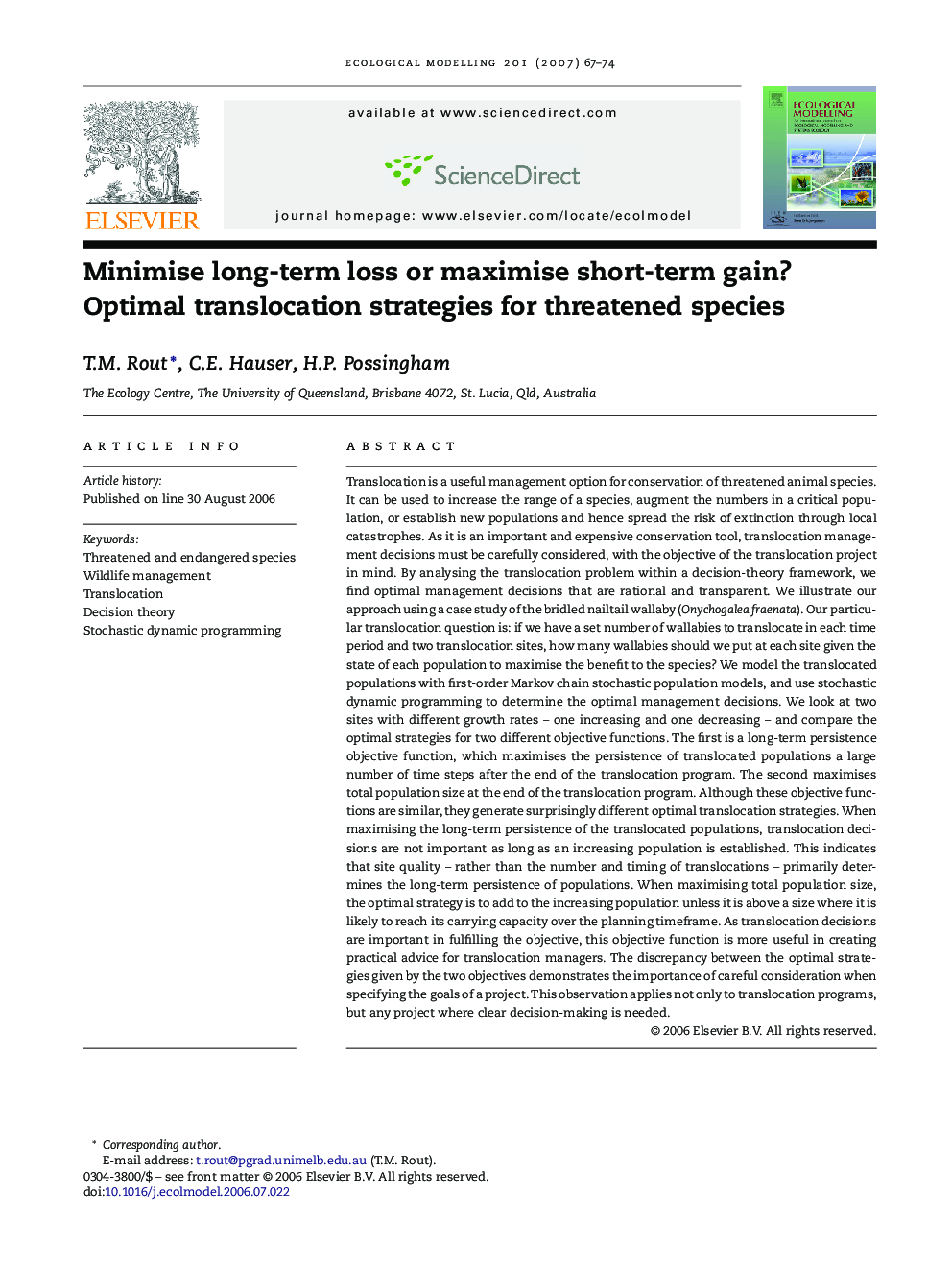| کد مقاله | کد نشریه | سال انتشار | مقاله انگلیسی | نسخه تمام متن |
|---|---|---|---|---|
| 4378794 | 1303494 | 2007 | 8 صفحه PDF | دانلود رایگان |
عنوان انگلیسی مقاله ISI
Minimise long-term loss or maximise short-term gain?
دانلود مقاله + سفارش ترجمه
دانلود مقاله ISI انگلیسی
رایگان برای ایرانیان
کلمات کلیدی
موضوعات مرتبط
علوم زیستی و بیوفناوری
علوم کشاورزی و بیولوژیک
بوم شناسی، تکامل، رفتار و سامانه شناسی
پیش نمایش صفحه اول مقاله

چکیده انگلیسی
Translocation is a useful management option for conservation of threatened animal species. It can be used to increase the range of a species, augment the numbers in a critical population, or establish new populations and hence spread the risk of extinction through local catastrophes. As it is an important and expensive conservation tool, translocation management decisions must be carefully considered, with the objective of the translocation project in mind. By analysing the translocation problem within a decision-theory framework, we find optimal management decisions that are rational and transparent. We illustrate our approach using a case study of the bridled nailtail wallaby (Onychogalea fraenata). Our particular translocation question is: if we have a set number of wallabies to translocate in each time period and two translocation sites, how many wallabies should we put at each site given the state of each population to maximise the benefit to the species? We model the translocated populations with first-order Markov chain stochastic population models, and use stochastic dynamic programming to determine the optimal management decisions. We look at two sites with different growth rates - one increasing and one decreasing - and compare the optimal strategies for two different objective functions. The first is a long-term persistence objective function, which maximises the persistence of translocated populations a large number of time steps after the end of the translocation program. The second maximises total population size at the end of the translocation program. Although these objective functions are similar, they generate surprisingly different optimal translocation strategies. When maximising the long-term persistence of the translocated populations, translocation decisions are not important as long as an increasing population is established. This indicates that site quality - rather than the number and timing of translocations - primarily determines the long-term persistence of populations. When maximising total population size, the optimal strategy is to add to the increasing population unless it is above a size where it is likely to reach its carrying capacity over the planning timeframe. As translocation decisions are important in fulfilling the objective, this objective function is more useful in creating practical advice for translocation managers. The discrepancy between the optimal strategies given by the two objectives demonstrates the importance of careful consideration when specifying the goals of a project. This observation applies not only to translocation programs, but any project where clear decision-making is needed.
ناشر
Database: Elsevier - ScienceDirect (ساینس دایرکت)
Journal: Ecological Modelling - Volume 201, Issue 1, 10 February 2007, Pages 67-74
Journal: Ecological Modelling - Volume 201, Issue 1, 10 February 2007, Pages 67-74
نویسندگان
T.M. Rout, C.E. Hauser, H.P. Possingham,